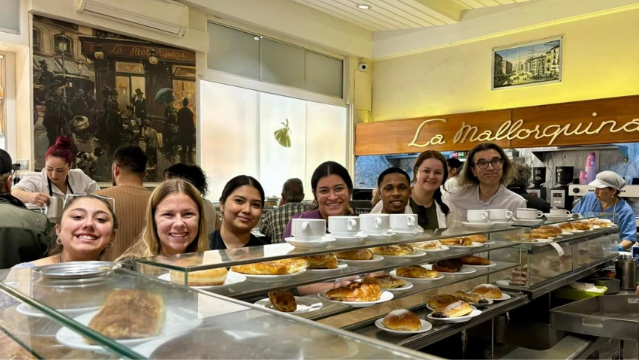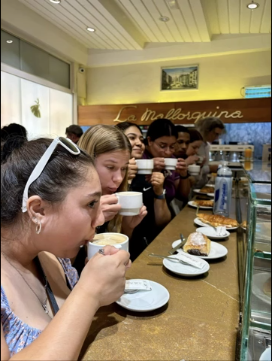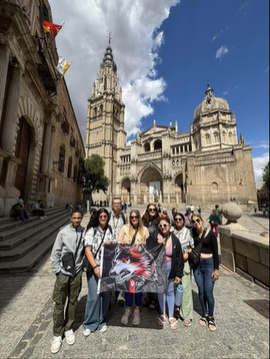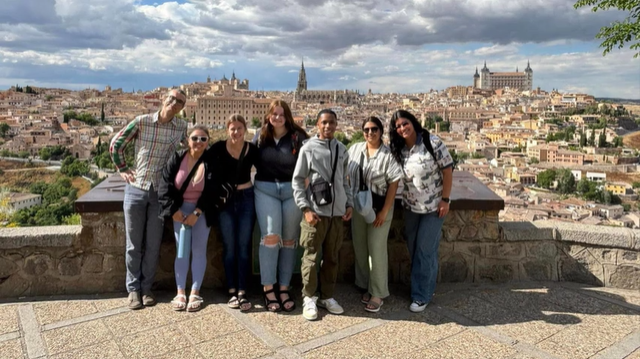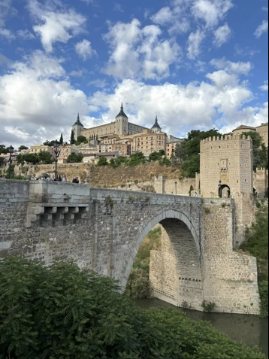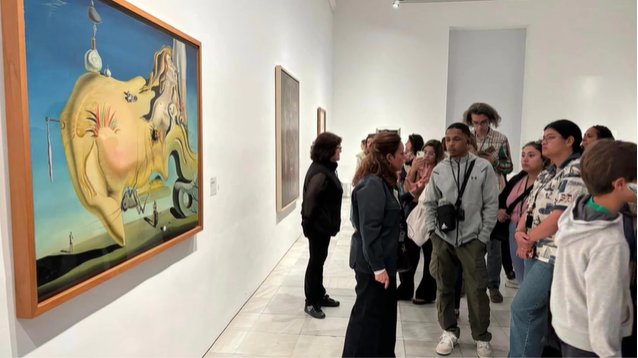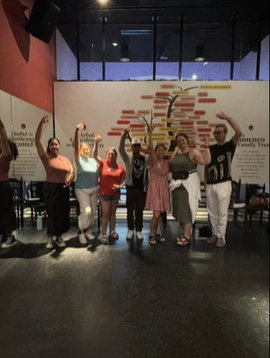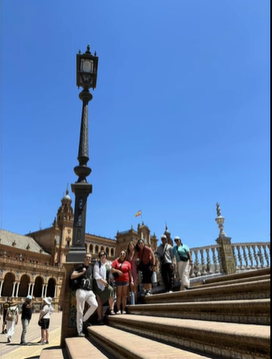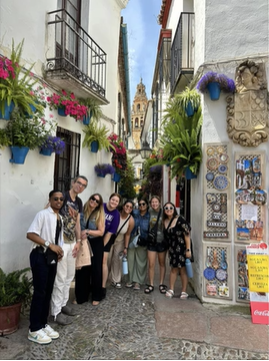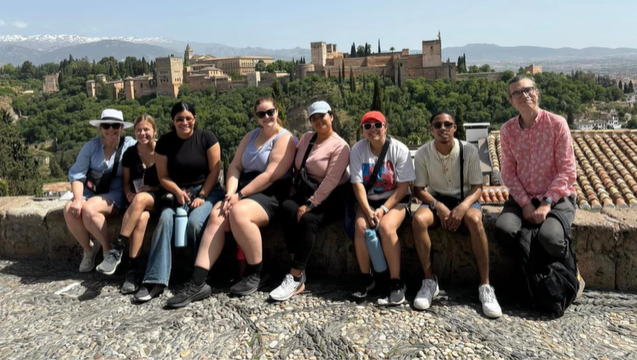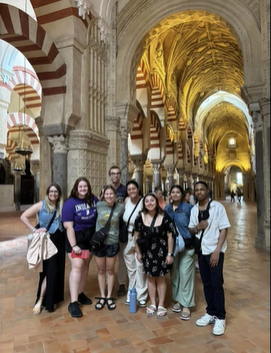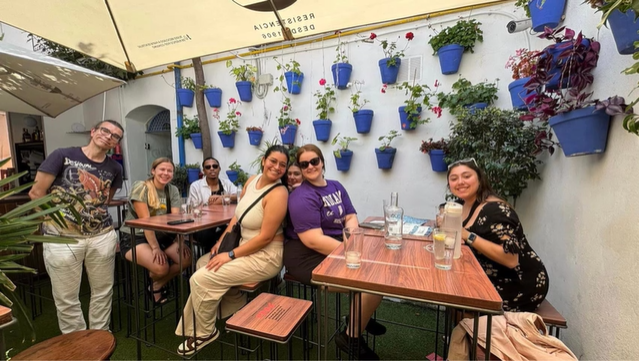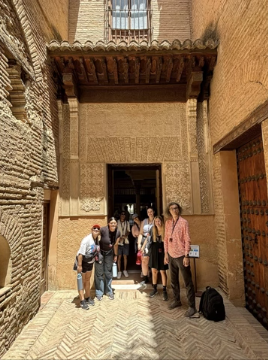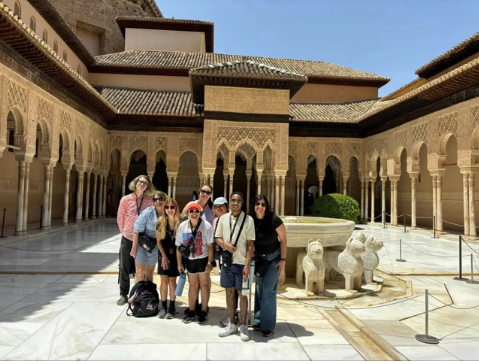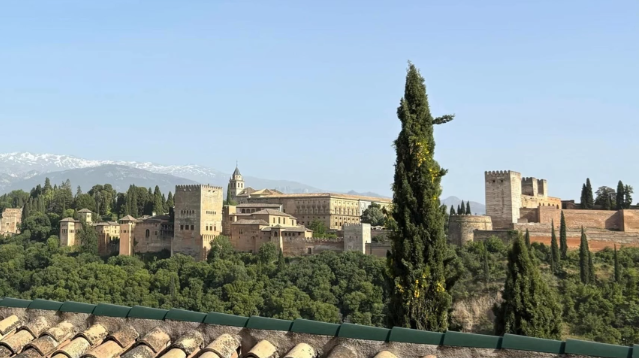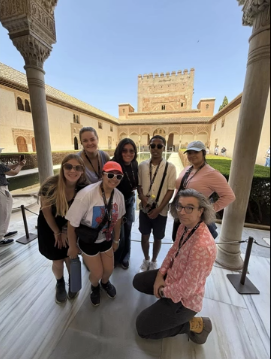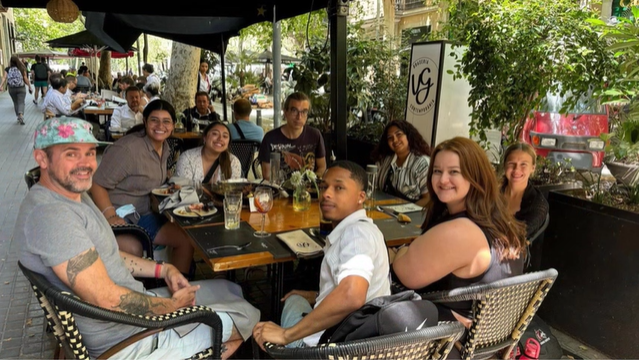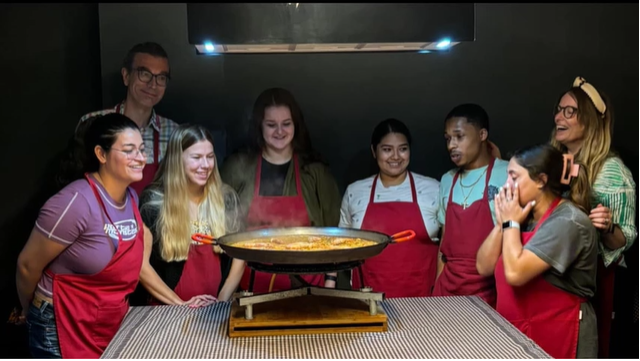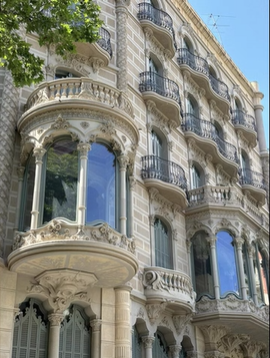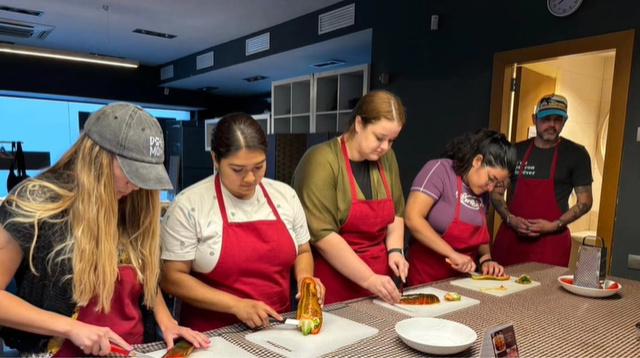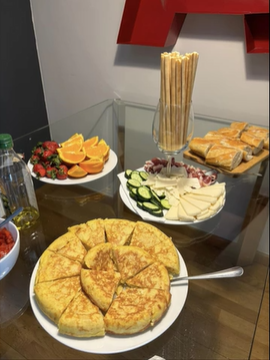3 Summer 2024: Spanish in Spain
Spain: The Cultural Context: “Diversity in Spain: Then and Now” (SPAN-S411) and Contemporary Reinterpretations: “Spain’s Medieval Past” (SPAN-S490)
May 18, 2024 – June 7, 2024
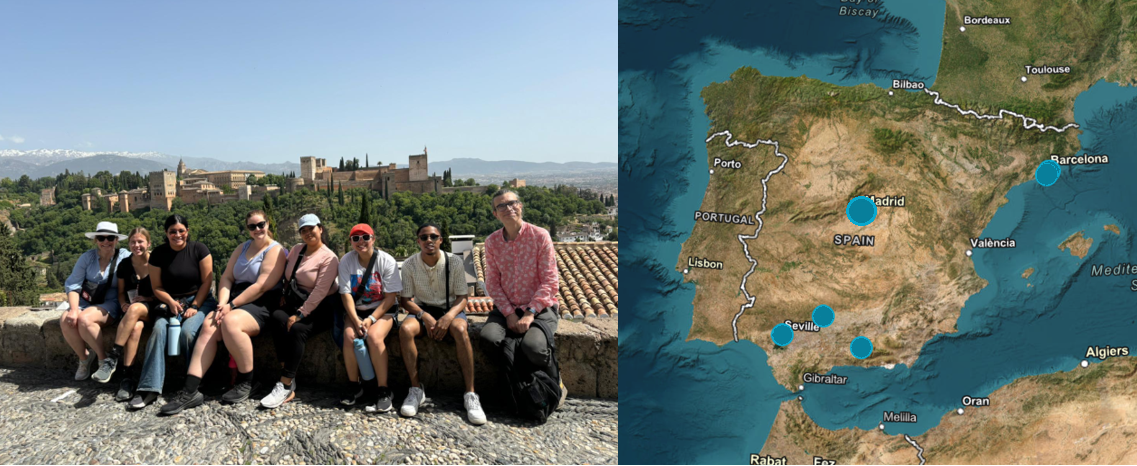
Madrid
- Students and professors posing in front of a coffee bar.
- Students and professors drinking coffee.
After landing in Madrid, students tried a local coffee beverage, café con leche, in a famous Spanish café, La Mallorquina.
Toledo and Madrid
- Students and professors with an IU East flag in Spain.
- Students and professors in Spain.
- Students and professors in Spain.
- Students and professors at an art gallery in Spain.
Students then travelled to Toledo and learned about the Jewish, Muslim, and Christian history of the area. Then they visited Reina Sofía Museum to view modern art.
Andalucía and Sevilla
Students proceeded to tour Andalucía and Sevilla. In Sevilla, students explored the largest gothic cathedral in the world, built on the remains of a mosque. Then they toured a Jewish neighborhood, visited a flamenco museum, watched a show, and took a class.
Córdoba
Students visited Córdoba, the former caliphate of the Muslim Empire. While in Córdoba, students visited a mosque which had been converted into a cathedral.
Granada
The students visited the palace Alhambra in the city of Granada.
Barcelona
Students stayed with local host families for the end of the trip. During their stay, the group met up to visit Sagrada familia, learn how to cook the Spanish rice dish paella, and practice their Spanish speaking skills.
Airport and Reflections
To conclude the trip, students reflected on the trip with the professors and one another on their way to the airport.
Photo Credits
Attributions listed alphabetically:
Dr. Dianne Moneypenny
Indiana University East Humanities and Social Sciences Facebook Page
Madrid, city, capital of Spain and of Madrid provincia (province). Spain’s arts and financial centre, the city proper and province form a comunidad autónoma (autonomous community) in central Spain.
Source: Britannica
https://www.britannica.com/place/Madrid
Toledo, city, capital of Toledo provincia (province), in the comunidad autónoma (autonomous community) of Castile–La Mancha, south-central Spain.
Source: Britannica
https://www.britannica.com/place/Toledo-Spain
Andalusia, comunidad autónoma (autonomous community) and historical region of Spain, encompassing the provincias (provinces) of Huelva, Cádiz, Sevilla, Málaga, Córdoba, Jaén, Granada, and Almería.
Source: Britannica
https://www.britannica.com/place/Andalusia-region-Spain
Sevilla, city, capital of the provincia (province) of Sevilla, in the Andalusia comunidad autónoma (autonomous community) of southern Spain.
Source: Britannica
https://www.britannica.com/place/Sevilla-Spain
Flamenco, form of song, dance, and instrumental (mostly guitar) music commonly associated with the Andalusian Roma (Gypsies) of southern Spain.
Source: Britannica
https://www.britannica.com/art/flamenco
Córdoba, city, capital of Córdoba provincia (province), in the north-central section of the comunidad autónoma (autonomous community) of Andalusia in southern Spain.
Source: Britannica
https://www.britannica.com/place/Cordoba-Spain
Alhambra, palace and fortress of the Moorish monarchs of Granada, Spain.
Source: Britannica
https://www.britannica.com/topic/Alhambra-fortress-Granada-Spain
Granada, city, capital of Granada provincia (province) in the comunidad autónoma (autonomous community) of Andalusia, southern Spain.
Source: Britannica https://www.britannica.com/place/Granada-Spain
Sagrada Família, Roman Catholic minor basilica in Barcelona, Spain, designed by Antoni Gaudí.
Source: Britannica https://www.britannica.com/topic/Sagrada-Familia

